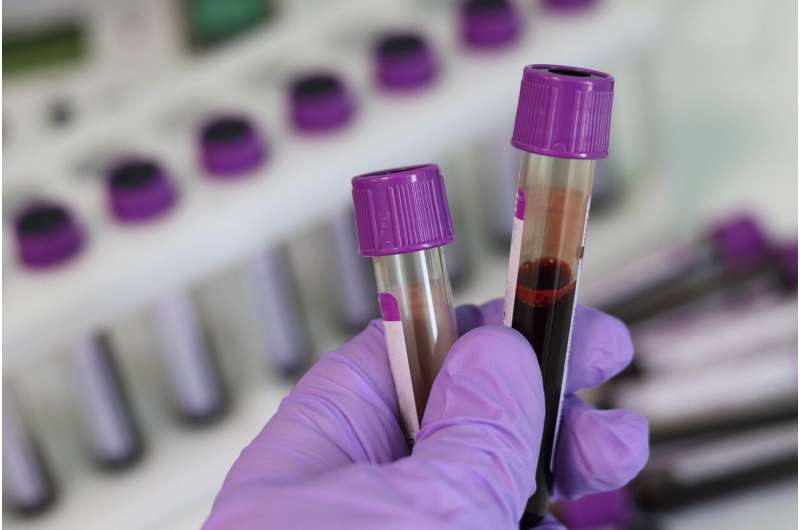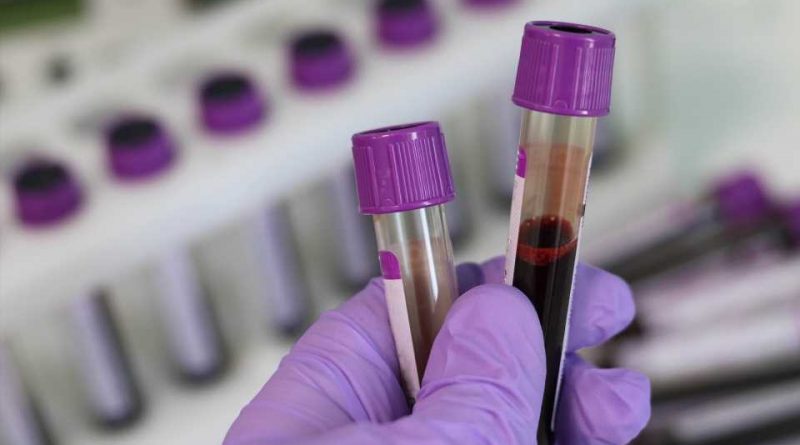Blood test aids in predicting lung cancer mortality risk

A blood-based test developed by researchers at The University of Texas MD Anderson Cancer Center can efficiently predict an individual’s risk of dying from lung cancer when combined with a personalized risk model.
According to new data published in the Journal of Clinical Oncology, a blood-based four-protein panel (4MP), when combined with a lung cancer risk model (PLCOm2012), can better identify those at high risk of dying from lung cancer than the current U.S. Preventive Services Task Force (USPSTF) criteria.
These findings build upon previous MD Anderson research demonstrating the combination test more accurately determined who is likely to benefit from lung cancer screening than the USPSTF criteria.
“This simple blood test has the potential to save lives by determining the need for lung cancer screening on a personalized basis,” said co-corresponding author Samir Hanash, M.D., Ph.D., professor of Clinical Cancer Prevention. “Given the challenges associated with CT as a frontline screening method for lung cancer and the fact that most individuals diagnosed with the disease do not meet current guidelines, there is an urgent demand for an alternative approach.”
For this study, MD Anderson researchers analyzed pre-diagnostic blood samples from the Prostate, Lung, Colorectal and Ovarian (PLCO) Cancer Screening Trial, including 552 individuals who later developed lung cancer and 2,193 who did not. Of the 552 individuals diagnosed during the six-year study period, 70% (387) died from lung cancer.
Using hazard ratios, the researchers assessed the relationship between the risk scores generated by the combination model (4MP + PLCOm2012) and the incidence of lung cancer death. The combination showed improved sensitivity, specificity and positive predictive value compared to the 2013 and 2021 USPSTF criteria for predicting lung cancer-specific mortality among individuals who smoked at least 10 pack-years (PYs).
The USPSTF recommends that adults at elevated risk for lung cancer receive a low-dose CT scan each year, which was shown to reduce lung cancer deaths in the 2011 National Lung Screening Trial (NLST). The 2021 USPSTF criteria applies to adults aged 50 to 80 who have at least a 20 PY smoking history and currently smoke or have quit within the past 15 years.
“For individuals who currently are not eligible for lung cancer screening, a positive test may help to identify those possibly at risk for lung cancer death,” said co-corresponding author Edwin Ostrin, M.D., Ph.D., assistant professor of General Internal Medicine. “We envision this as a tool that could be deployed worldwide, as the future of early detection of this disease.”
Lung cancer causes an estimated 25% of cancer deaths. Early detection improves prospects of survival, but most countries do not screen for it. Fewer than half of all U.S. cases are among people who are eligible under USPSTF guidelines.
While the blood test could be implemented as a lab-developed test in the near future, Food and Drug Administration (FDA) approval likely would require evaluation through a prospective clinical trial.
More information:
Journal of Clinical Oncology (2023). ascopubs.org/doi/abs/10.1200/JCO.22.02424
Journal information:
Journal of Clinical Oncology
Source: Read Full Article
